- Renault Triber 2025: Versatility Reinvented for Indian Roads
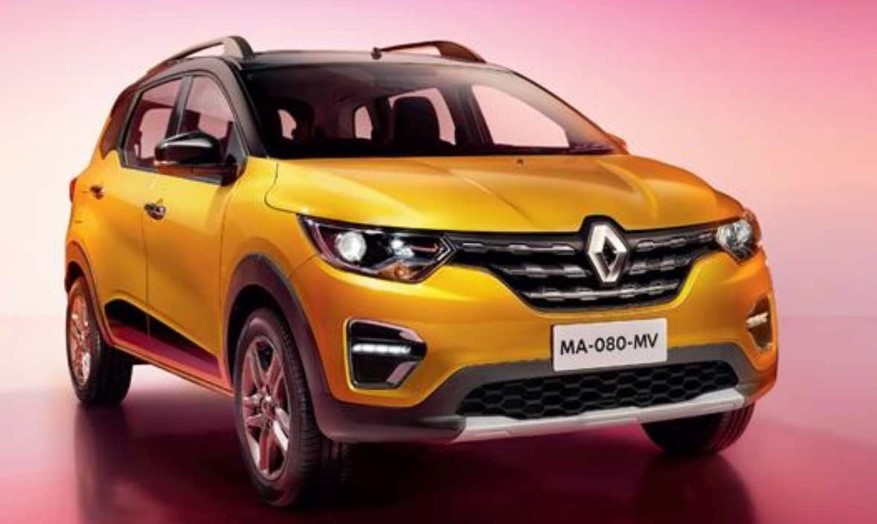 Renault has firmly established its presence in India over the last decade, consistently introducing vehicles designed for the diverse needs of Indian families. In 2025, Renault is set to take another bold step forward with the introduction of the updated Triber. Scheduled for launch on July 23, 2025, the facelifted Triber aims to reinforce the … Read more
Renault has firmly established its presence in India over the last decade, consistently introducing vehicles designed for the diverse needs of Indian families. In 2025, Renault is set to take another bold step forward with the introduction of the updated Triber. Scheduled for launch on July 23, 2025, the facelifted Triber aims to reinforce the … Read more - Unveiling Excellence: Realme C71 4G Redefines Affordable Innovation
 In an era where smartphone innovation is often synonymous with high prices, Realme has consistently broken the mold with devices that blend feature-rich experiences and exemplary value. The launch of the Realme C71 4G marks yet another chapter in this story. Positioned at the crossroads of affordability and capability, the Realme C71 4G brings a … Read more
In an era where smartphone innovation is often synonymous with high prices, Realme has consistently broken the mold with devices that blend feature-rich experiences and exemplary value. The launch of the Realme C71 4G marks yet another chapter in this story. Positioned at the crossroads of affordability and capability, the Realme C71 4G brings a … Read more - The Honda WR-V: Blending Performance, Practicality, and Style
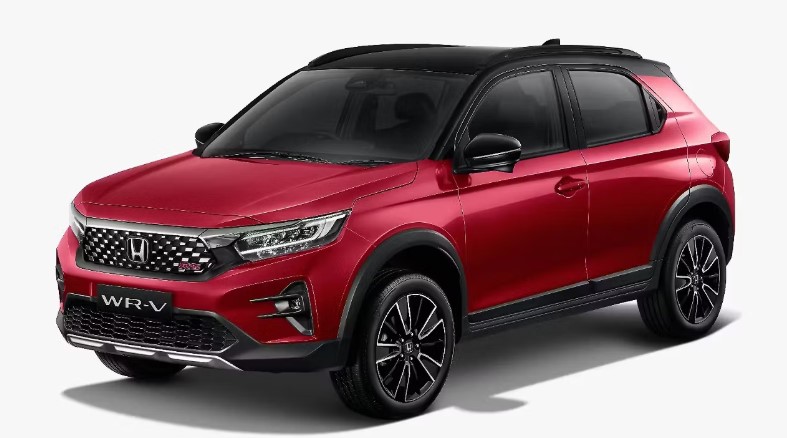 When Honda first unveiled the WR-V (Winsome Runabout Vehicle), it was positioned to carve a distinct niche in the compact SUV segment, targeting urban adventurers and families seeking both versatility and refinement. The first-generation Honda WR-V made its global debut in Brazil on March 15, 2017, closely followed by its launch in India on March … Read more
When Honda first unveiled the WR-V (Winsome Runabout Vehicle), it was positioned to carve a distinct niche in the compact SUV segment, targeting urban adventurers and families seeking both versatility and refinement. The first-generation Honda WR-V made its global debut in Brazil on March 15, 2017, closely followed by its launch in India on March … Read more - Infinix Smart 10 Plus: A Brilliant Leap in Budget Smartphones
 With every new release, Infinix consistently pushes the boundaries of what is possible in the budget smartphone segment. The Infinix Smart 10 Plus is the latest testament to the brand’s philosophy of delivering premium features at accessible prices. Launched with an eye on emerging markets and demanding youth, this model promises a striking blend of … Read more
With every new release, Infinix consistently pushes the boundaries of what is possible in the budget smartphone segment. The Infinix Smart 10 Plus is the latest testament to the brand’s philosophy of delivering premium features at accessible prices. Launched with an eye on emerging markets and demanding youth, this model promises a striking blend of … Read more - Suzuki E Access: Ushering in a New Era of Urban Mobility
 The Suzuki E Access marks a significant milestone in Suzuki’s journey, representing the brand’s first foray into the electric scooter segment in India. The E Access was officially unveiled at the Bharat Mobility Global Expo 2025, a move that signaled Suzuki’s commitment to sustainable mobility and innovation. Production commenced at Suzuki’s Gurugram plant, with the … Read more
The Suzuki E Access marks a significant milestone in Suzuki’s journey, representing the brand’s first foray into the electric scooter segment in India. The E Access was officially unveiled at the Bharat Mobility Global Expo 2025, a move that signaled Suzuki’s commitment to sustainable mobility and innovation. Production commenced at Suzuki’s Gurugram plant, with the … Read more - Motorola Edge 60 Pro: Redefining Premium with Power and Elegance
 The **Motorola Edge 60 Pro** has arrived as a bold statement in the premium smartphone segment, blending cutting-edge technology with a refined aesthetic. Launched on April 24, 2025, this device is not just another flagship—it is Motorola’s showcase of innovation, performance, and style, aimed at users who demand both substance and sophistication from their mobile … Read more
The **Motorola Edge 60 Pro** has arrived as a bold statement in the premium smartphone segment, blending cutting-edge technology with a refined aesthetic. Launched on April 24, 2025, this device is not just another flagship—it is Motorola’s showcase of innovation, performance, and style, aimed at users who demand both substance and sophistication from their mobile … Read more - MG M9 EV: Redefining Luxury Electric Mobility in India
 The arrival of the **MG M9 EV** marks a significant milestone for MG Motor in India’s premium electric vehicle segment. Unveiled at the Bharat Mobility Global Expo 2025 and showcased earlier at the Auto Expo 2025, the M9 EV is MG’s flagship luxury electric MPV, designed to challenge established rivals like the Toyota Vellfire and … Read more
The arrival of the **MG M9 EV** marks a significant milestone for MG Motor in India’s premium electric vehicle segment. Unveiled at the Bharat Mobility Global Expo 2025 and showcased earlier at the Auto Expo 2025, the M9 EV is MG’s flagship luxury electric MPV, designed to challenge established rivals like the Toyota Vellfire and … Read more - OnePlus Nord CE 5: Redefining Mid-Range Excellence
 The OnePlus Nord CE 5 has arrived, carrying forward the brand’s legacy of delivering feature-rich smartphones at compelling prices. With a blend of robust performance, modern design, and thoughtful features, the Nord CE 5 is positioned to be a game-changer in the mid-range smartphone segment. This article explores every aspect of the new device, from … Read more
The OnePlus Nord CE 5 has arrived, carrying forward the brand’s legacy of delivering feature-rich smartphones at compelling prices. With a blend of robust performance, modern design, and thoughtful features, the Nord CE 5 is positioned to be a game-changer in the mid-range smartphone segment. This article explores every aspect of the new device, from … Read more - Samsung Galaxy Z Flip 6: The Next Evolution in Foldable Smartphones
 The Samsung Galaxy Z Flip 6 marks a significant milestone in the evolution of foldable smartphones, blending innovative design, powerful hardware, and a suite of user-focused features. Officially unveiled at the Samsung Galaxy Unpacked event in Paris on July 10, 2024, alongside the Galaxy Z Fold 6 and other new devices, the Z Flip 6 … Read more
The Samsung Galaxy Z Flip 6 marks a significant milestone in the evolution of foldable smartphones, blending innovative design, powerful hardware, and a suite of user-focused features. Officially unveiled at the Samsung Galaxy Unpacked event in Paris on July 10, 2024, alongside the Galaxy Z Fold 6 and other new devices, the Z Flip 6 … Read more - Volkswagen Golf GTI: The 2025 Hot Hatch Icon Returns
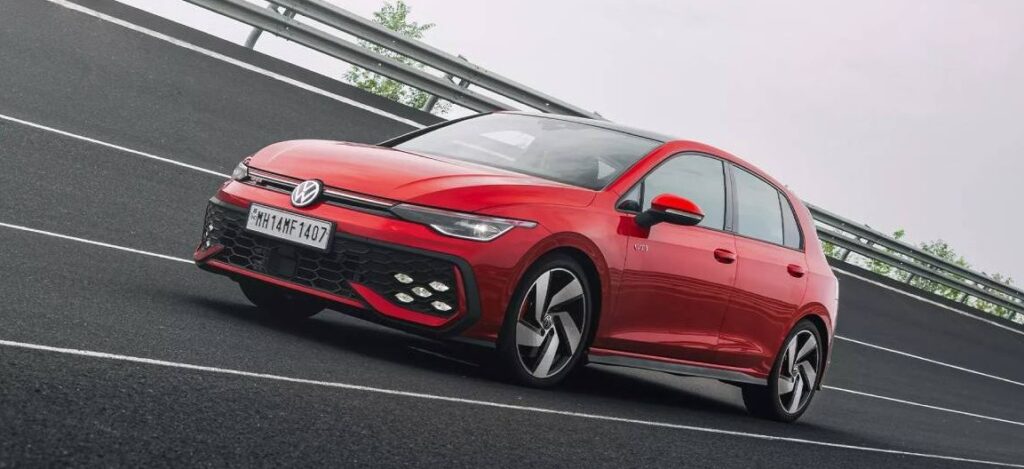 The Volkswagen Golf GTI has long stood as the benchmark for hot hatches, blending everyday usability with thrilling performance and a legacy that spans nearly five decades. The 2025 Golf GTI arrives with notable updates, new technology, and a renewed focus on driver engagement, all while staying true to its roots as a practical yet … Read more
The Volkswagen Golf GTI has long stood as the benchmark for hot hatches, blending everyday usability with thrilling performance and a legacy that spans nearly five decades. The 2025 Golf GTI arrives with notable updates, new technology, and a renewed focus on driver engagement, all while staying true to its roots as a practical yet … Read more - POCO F7 Ultra: A Flagship Powerhouse for Gamers and Power Users
 The POCO F7 Ultra, launched globally on March 27, 2025, is a flagship-level smartphone that combines cutting-edge performance with advanced features designed for gamers and power users. At its core, the device is powered by the Snapdragon 8 Elite chipset, built on an advanced 3nm process, delivering a significant boost in CPU, GPU, and AI … Read more
The POCO F7 Ultra, launched globally on March 27, 2025, is a flagship-level smartphone that combines cutting-edge performance with advanced features designed for gamers and power users. At its core, the device is powered by the Snapdragon 8 Elite chipset, built on an advanced 3nm process, delivering a significant boost in CPU, GPU, and AI … Read more - 2025 Kia Carens: A Comprehensive Look at the Updated MPV
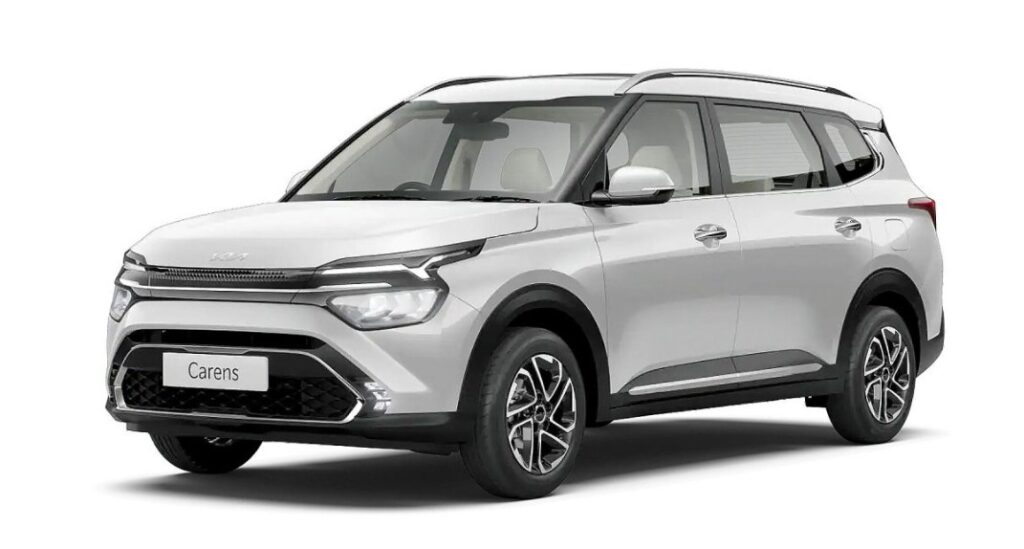 The 2025 Kia Carens is set to make a significant impact in the Indian MPV market with its upcoming launch on May 8, 2025. Building on the strengths of its predecessor, the refreshed Carens introduces notable design enhancements, advanced technology, and new safety features, all while retaining its versatile powertrains and practical family-focused appeal. Here’s … Read more
The 2025 Kia Carens is set to make a significant impact in the Indian MPV market with its upcoming launch on May 8, 2025. Building on the strengths of its predecessor, the refreshed Carens introduces notable design enhancements, advanced technology, and new safety features, all while retaining its versatile powertrains and practical family-focused appeal. Here’s … Read more - Volvo XC90: Redefining Luxury, Safety, and Innovation in the SUV Segment
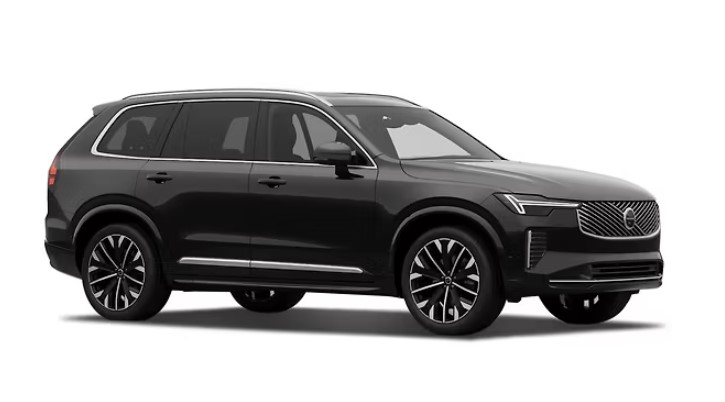 The Volvo XC90 made its global debut in 2002, marking a significant milestone for the Swedish automaker as it entered the premium SUV market. The XC90 quickly established itself as a flagship model, embodying Volvo’s commitment to safety, Scandinavian design, and advanced technology. Over the years, the XC90 has undergone substantial evolution, with the latest … Read more
The Volvo XC90 made its global debut in 2002, marking a significant milestone for the Swedish automaker as it entered the premium SUV market. The XC90 quickly established itself as a flagship model, embodying Volvo’s commitment to safety, Scandinavian design, and advanced technology. Over the years, the XC90 has undergone substantial evolution, with the latest … Read more - iPhone 17 Series: Apple’s Bold Leap into the Future
 The iPhone 17 series is poised to mark a transformative chapter in Apple’s storied smartphone legacy. As anticipation reaches fever pitch, leaks and reports reveal a lineup that’s not only more diverse but also more ambitious than ever, with striking design shifts, significant hardware upgrades, and a strategic shakeup in model offerings. Here’s an in-depth … Read more
The iPhone 17 series is poised to mark a transformative chapter in Apple’s storied smartphone legacy. As anticipation reaches fever pitch, leaks and reports reveal a lineup that’s not only more diverse but also more ambitious than ever, with striking design shifts, significant hardware upgrades, and a strategic shakeup in model offerings. Here’s an in-depth … Read more - Realme 14T 5G: The Affordable 5G Marvel Redefining Mid-Range Smartphones
 Realme has always been at the forefront of delivering value-packed smartphones, and with the launch of the Realme 14T 5G, the brand has once again set a new benchmark in the mid-range segment. The Realme 14T 5G made its grand entrance on April 25, 2025, targeting key Asian markets such as India and the Philippines. … Read more
Realme has always been at the forefront of delivering value-packed smartphones, and with the launch of the Realme 14T 5G, the brand has once again set a new benchmark in the mid-range segment. The Realme 14T 5G made its grand entrance on April 25, 2025, targeting key Asian markets such as India and the Philippines. … Read more - Tata Avinya: Heralding a New Era in Indian Electric Mobility
 Tata Avinya stands as Tata Motors’ boldest leap into the future of electric mobility, blending innovation, luxury, and sustainability in a package designed to redefine the Indian automotive landscape. As Tata’s flagship electric SUV, Avinya is not just a car but a vision-one that encapsulates the brand’s commitment to next-generation technology, safety, and a premium … Read more
Tata Avinya stands as Tata Motors’ boldest leap into the future of electric mobility, blending innovation, luxury, and sustainability in a package designed to redefine the Indian automotive landscape. As Tata’s flagship electric SUV, Avinya is not just a car but a vision-one that encapsulates the brand’s commitment to next-generation technology, safety, and a premium … Read more - Suzuki Gixxer 150: The Perfect Blend of Style, Performance, and Practicality
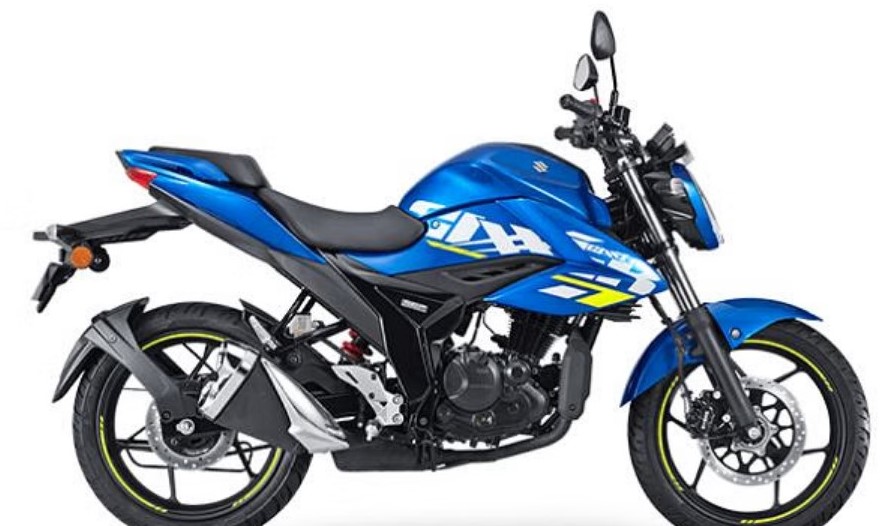 The Suzuki Gixxer 150 made its debut as a game-changer in the Indian motorcycle market. Designed to cater to the growing demand for sporty yet practical bikes in the 150cc segment, this model quickly gained popularity among riders. Over the years, Suzuki has introduced updates to the Gixxer 150, ensuring it stays ahead of its … Read more
The Suzuki Gixxer 150 made its debut as a game-changer in the Indian motorcycle market. Designed to cater to the growing demand for sporty yet practical bikes in the 150cc segment, this model quickly gained popularity among riders. Over the years, Suzuki has introduced updates to the Gixxer 150, ensuring it stays ahead of its … Read more - Tecno Camon 30: A Blend of Style, Power, and Innovation
 The Tecno Camon 30 has emerged as a standout device in the mid-range smartphone market, offering an attractive combination of design, performance, and camera capabilities. Introduced during the Mobile World Congress (MWC) 2024 in Barcelona, this device is part of Tecno’s Camon 30 series lineup, which includes the Camon 30, Camon 30 5G, Camon 30 … Read more
The Tecno Camon 30 has emerged as a standout device in the mid-range smartphone market, offering an attractive combination of design, performance, and camera capabilities. Introduced during the Mobile World Congress (MWC) 2024 in Barcelona, this device is part of Tecno’s Camon 30 series lineup, which includes the Camon 30, Camon 30 5G, Camon 30 … Read more - Honor X70 5G: Redefining Mid-Range Excellence
 The Honor X70 5G marks a significant addition to Honor’s celebrated X-series, blending advanced features with a competitive price point. Officially announced in late April 2025, the Honor X70 5G is poised for release at the end of April, targeting tech enthusiasts and everyday users who crave a modern smartphone experience without the flagship price … Read more
The Honor X70 5G marks a significant addition to Honor’s celebrated X-series, blending advanced features with a competitive price point. Officially announced in late April 2025, the Honor X70 5G is poised for release at the end of April, targeting tech enthusiasts and everyday users who crave a modern smartphone experience without the flagship price … Read more - Skoda Kylaq: A New Chapter in Sub-4m SUVs
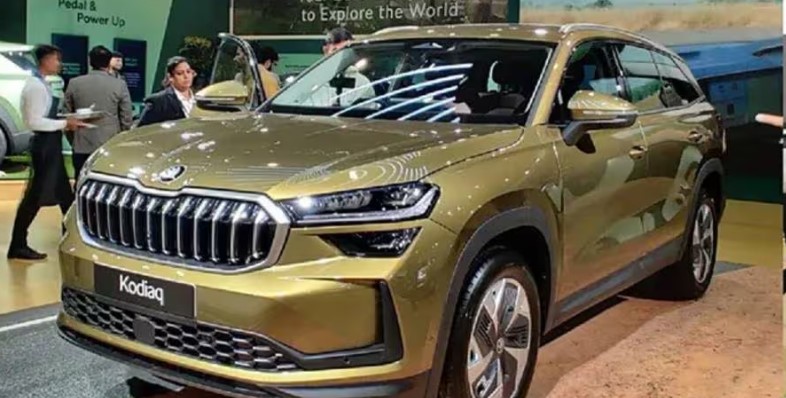 The Skoda Kylaq marks a significant milestone for Skoda Auto, as it ventures into India’s competitive sub-four-metre SUV segment. Designed to blend European sophistication with Indian practicality, the Kylaq aims to set new benchmarks in design, safety, performance, and value. Here’s a comprehensive look at what makes the Skoda Kylaq a standout contender in its … Read more
The Skoda Kylaq marks a significant milestone for Skoda Auto, as it ventures into India’s competitive sub-four-metre SUV segment. Designed to blend European sophistication with Indian practicality, the Kylaq aims to set new benchmarks in design, safety, performance, and value. Here’s a comprehensive look at what makes the Skoda Kylaq a standout contender in its … Read more - BMW X3: Redefining the Premium Midsize SUV Experience
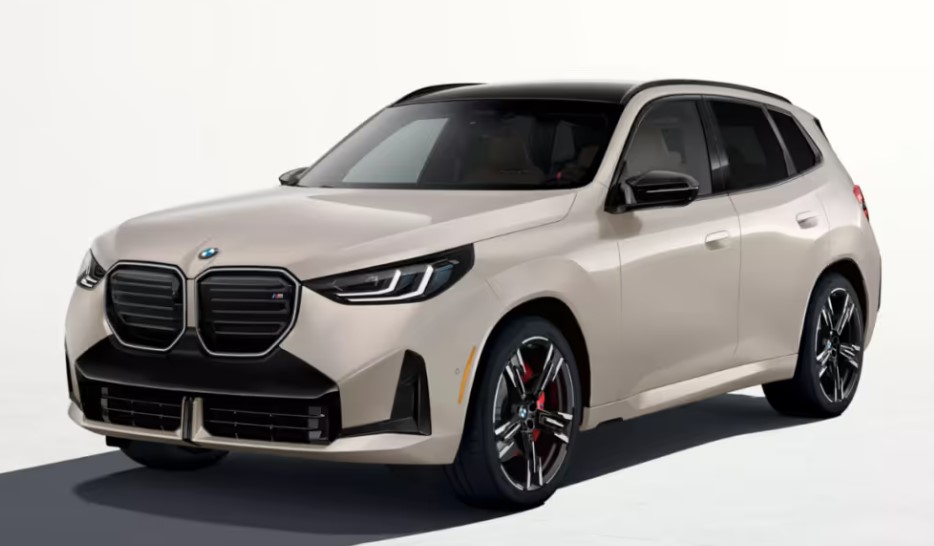 The all-new BMW X3, now in its fourth generation, made a striking debut in India at the Auto Expo 2025. This launch marks a significant milestone for the German automaker, as the X3 continues its legacy as a best-selling premium model in its class worldwide. Locally produced at BMW Group Plant Chennai, the X3 is … Read more
The all-new BMW X3, now in its fourth generation, made a striking debut in India at the Auto Expo 2025. This launch marks a significant milestone for the German automaker, as the X3 continues its legacy as a best-selling premium model in its class worldwide. Locally produced at BMW Group Plant Chennai, the X3 is … Read more - iQOO Z9s 5G: A Stylish Powerhouse for the Modern User
 The iQOO Z9s 5G made its official debut in India, quickly capturing attention in the competitive mid-range smartphone segment. Released soon after its announcement, the Z9s 5G builds upon the success of its predecessors, offering a blend of performance, style, and value that appeals to a wide range of users. Available in striking Titanium Matte … Read more
The iQOO Z9s 5G made its official debut in India, quickly capturing attention in the competitive mid-range smartphone segment. Released soon after its announcement, the Z9s 5G builds upon the success of its predecessors, offering a blend of performance, style, and value that appeals to a wide range of users. Available in striking Titanium Matte … Read more - Xiaomi Redmi Turbo 4: The Turbocharged Mid-Range Marvel
 Xiaomi Redmi Turbo 4 : Xiaomi kicked off 2025 with a bang by unveiling the Redmi Turbo 4, a smartphone designed to redefine the mid-range segment. The device was officially launched in China on January 2, 2025, marking its debut as one of the first major smartphone releases of the year. The anticipation around the … Read more
Xiaomi Redmi Turbo 4 : Xiaomi kicked off 2025 with a bang by unveiling the Redmi Turbo 4, a smartphone designed to redefine the mid-range segment. The device was officially launched in China on January 2, 2025, marking its debut as one of the first major smartphone releases of the year. The anticipation around the … Read more - MG Majestor: The New Benchmark in Premium SUVs
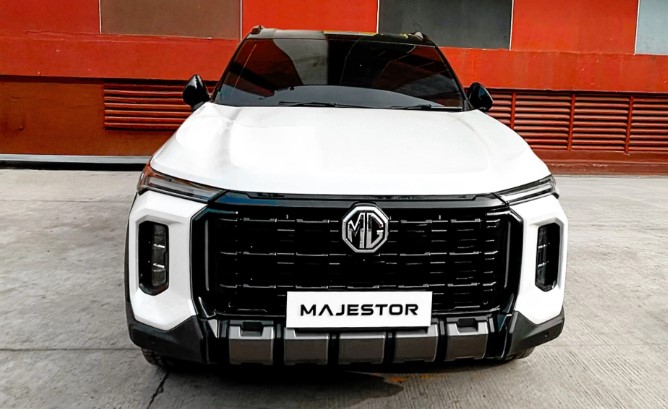 The MG Majestor is set to make a significant impact in the Indian automotive market with its anticipated launch scheduled for May 2025. This full-size premium SUV has already generated considerable excitement, having been showcased at the Bharat Mobility Global Expo 2025. With an estimated starting price of ₹46 lakh, the Majestor positions itself as … Read more
The MG Majestor is set to make a significant impact in the Indian automotive market with its anticipated launch scheduled for May 2025. This full-size premium SUV has already generated considerable excitement, having been showcased at the Bharat Mobility Global Expo 2025. With an estimated starting price of ₹46 lakh, the Majestor positions itself as … Read more - POCO X6 Pro: Redefining the Mid-Range Smartphone Experience
 The POCO X6 Pro made a notable entrance into the smartphone market with its official announcement on January 11, 2024, followed by its sales debut shortly afterward. This launch marked POCO’s commitment to delivering high-performance devices at competitive prices, targeting users who demand flagship-like features without breaking the bank. The X6 Pro, as part of … Read more
The POCO X6 Pro made a notable entrance into the smartphone market with its official announcement on January 11, 2024, followed by its sales debut shortly afterward. This launch marked POCO’s commitment to delivering high-performance devices at competitive prices, targeting users who demand flagship-like features without breaking the bank. The X6 Pro, as part of … Read more - Aston Martin Vanquish: The Pinnacle of British Grand Touring
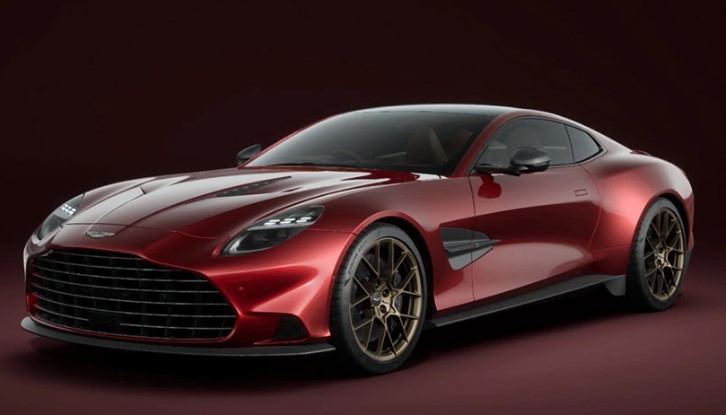 The Aston Martin Vanquish is a name synonymous with British luxury, performance, and timeless design. The Vanquish first graced the automotive world in 2001, unveiled at the Geneva Motor Show as the marque’s new flagship grand tourer. Designed by Ian Callum, the original Vanquish was the spiritual successor to the Aston Martin Virage and quickly … Read more
The Aston Martin Vanquish is a name synonymous with British luxury, performance, and timeless design. The Vanquish first graced the automotive world in 2001, unveiled at the Geneva Motor Show as the marque’s new flagship grand tourer. Designed by Ian Callum, the original Vanquish was the spiritual successor to the Aston Martin Virage and quickly … Read more - Mahindra XUV 3XO: The New Disruptor in India’s Compact SUV Segment
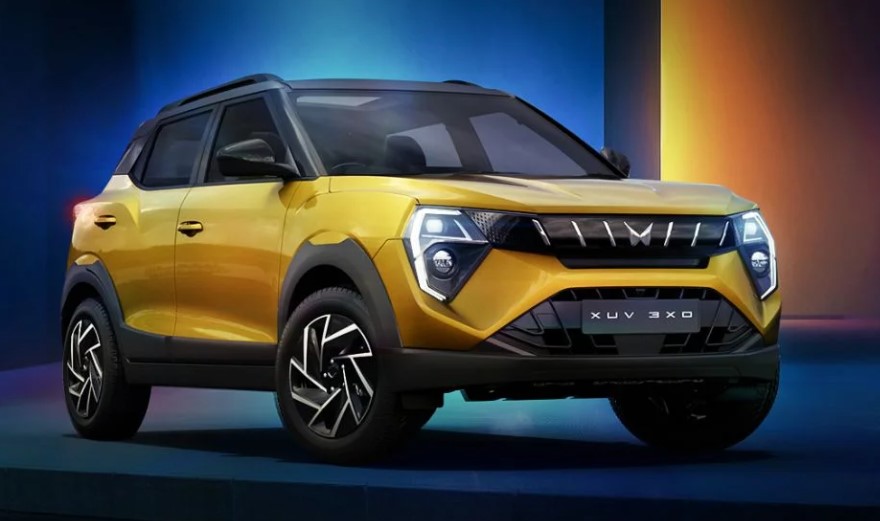 Mahindra has once again made headlines in the Indian automotive market with the launch of the XUV 3XO, a compact SUV that promises to redefine expectations in its segment. Building on the strong foundation of the XUV300, the XUV 3XO arrives with a host of enhancements in design, technology, safety, and performance, positioning itself as … Read more
Mahindra has once again made headlines in the Indian automotive market with the launch of the XUV 3XO, a compact SUV that promises to redefine expectations in its segment. Building on the strong foundation of the XUV300, the XUV 3XO arrives with a host of enhancements in design, technology, safety, and performance, positioning itself as … Read more - Realme 14T 5G: Power-Packed Performance Meets Stunning Display
 Realme launched the Realme 14T 5G in April 2025, marking its entry into the competitive mid-range smartphone segment with a focus on delivering a balanced mix of performance, battery life, and camera capabilities. The device targets users looking for a feature-rich smartphone that can handle daily tasks, gaming, and multimedia consumption without breaking the bank. … Read more
Realme launched the Realme 14T 5G in April 2025, marking its entry into the competitive mid-range smartphone segment with a focus on delivering a balanced mix of performance, battery life, and camera capabilities. The device targets users looking for a feature-rich smartphone that can handle daily tasks, gaming, and multimedia consumption without breaking the bank. … Read more - 2025 Toyota Fortuner: The Icon Reimagined for a New Era
 The 2025 Toyota Fortuner arrives as a bold evolution of one of the world’s most trusted and admired SUVs. Building on a heritage of rugged reliability and off-road prowess, the latest Fortuner introduces a new platform, advanced technology, refined design, and enhanced efficiency. This article explores every aspect of the 2025 Toyota Fortuner, from its … Read more
The 2025 Toyota Fortuner arrives as a bold evolution of one of the world’s most trusted and admired SUVs. Building on a heritage of rugged reliability and off-road prowess, the latest Fortuner introduces a new platform, advanced technology, refined design, and enhanced efficiency. This article explores every aspect of the 2025 Toyota Fortuner, from its … Read more - Motorola Razr 60: The Next-Gen Flip Phone for 2025
 Motorola Razr 60 : Motorola has introduced the Razr 60 as part of its latest generation of foldable smartphones in April 2025, targeting users who want a blend of nostalgic flip phone design with modern flagship features. Positioned as a top-tier flip phone for the year, the Razr 60 brings an impressive set of specifications … Read more
Motorola Razr 60 : Motorola has introduced the Razr 60 as part of its latest generation of foldable smartphones in April 2025, targeting users who want a blend of nostalgic flip phone design with modern flagship features. Positioned as a top-tier flip phone for the year, the Razr 60 brings an impressive set of specifications … Read more - Hyundai Creta: Redefining the Compact SUV Experience
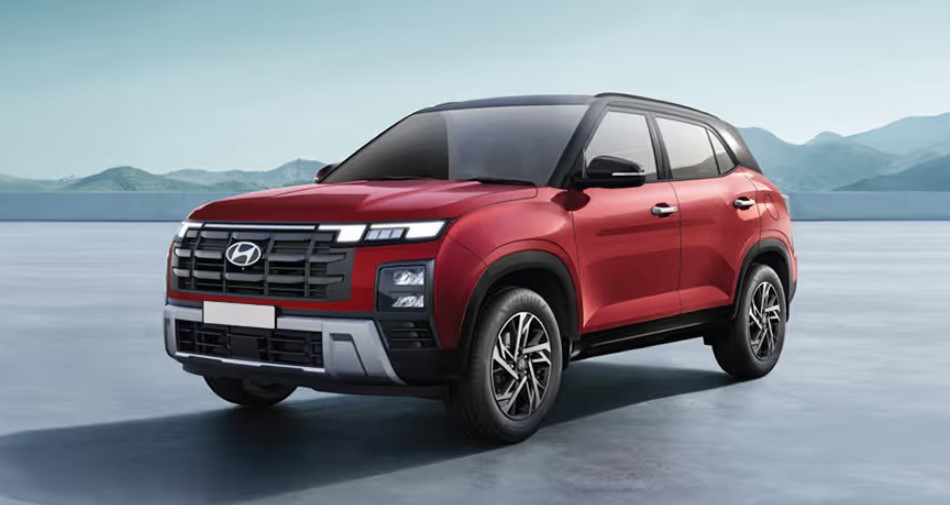 The Hyundai Creta has firmly established itself as a benchmark in the compact SUV segment, blending style, performance, technology, and practicality in a package that appeals to a wide spectrum of Indian car buyers. Since its initial launch, the Creta has consistently evolved to meet the changing demands of customers, offering a compelling mix of … Read more
The Hyundai Creta has firmly established itself as a benchmark in the compact SUV segment, blending style, performance, technology, and practicality in a package that appeals to a wide spectrum of Indian car buyers. Since its initial launch, the Creta has consistently evolved to meet the changing demands of customers, offering a compelling mix of … Read more - Redmi Note 14 5G: Redefining the Mid-Range Smartphone Experience
 Xiaomi has once again set the stage for innovation with the launch of the Redmi Note 14 5G, officially unveiled on December 9, 2024. The launch event, streamed live for audiences across India and the world, marked the arrival of the latest addition to Xiaomi’s celebrated Note series, which has consistently delivered a blend of … Read more
Xiaomi has once again set the stage for innovation with the launch of the Redmi Note 14 5G, officially unveiled on December 9, 2024. The launch event, streamed live for audiences across India and the world, marked the arrival of the latest addition to Xiaomi’s celebrated Note series, which has consistently delivered a blend of … Read more - Mahindra Thar ROXX: Redefining Adventure with Modern Luxury
 The Mahindra Thar ROXX made its much-anticipated debut in 2024, quickly becoming one of the most talked-about launches in the Indian automotive market. Mahindra introduced the Thar ROXX at a starting price of Rs 12.99 lakh (ex-showroom), positioning it as an accessible yet premium SUV for enthusiasts and families alike. The launch generated significant excitement, … Read more
The Mahindra Thar ROXX made its much-anticipated debut in 2024, quickly becoming one of the most talked-about launches in the Indian automotive market. Mahindra introduced the Thar ROXX at a starting price of Rs 12.99 lakh (ex-showroom), positioning it as an accessible yet premium SUV for enthusiasts and families alike. The launch generated significant excitement, … Read more - iQOO Neo 10R 5G: High-Performance Mid-Range Powerhouse
 The iQOO Neo 10R 5G, launched in March 2025 and available in India since mid-March, is a powerful mid-range smartphone that offers flagship-level performance and features at a competitive price. It sports a 6.78-inch AMOLED display with a 1.5K resolution (1260 x 2800 pixels), 144Hz refresh rate, and HDR10+ support, delivering vibrant colors and smooth … Read more
The iQOO Neo 10R 5G, launched in March 2025 and available in India since mid-March, is a powerful mid-range smartphone that offers flagship-level performance and features at a competitive price. It sports a 6.78-inch AMOLED display with a 1.5K resolution (1260 x 2800 pixels), 144Hz refresh rate, and HDR10+ support, delivering vibrant colors and smooth … Read more - Google Pixel 9 Pro: A New Benchmark in Smartphone Innovation
 The Google Pixel 9 Pro, launched on September 4, 2024, marks a significant advancement in Google’s flagship smartphone lineup, blending cutting-edge technology with refined design and AI capabilities. Priced at $999 or £999 for the base model, it positions itself competitively alongside other premium smartphones like the iPhone 16 Pro, offering a compelling package for … Read more
The Google Pixel 9 Pro, launched on September 4, 2024, marks a significant advancement in Google’s flagship smartphone lineup, blending cutting-edge technology with refined design and AI capabilities. Priced at $999 or £999 for the base model, it positions itself competitively alongside other premium smartphones like the iPhone 16 Pro, offering a compelling package for … Read more - Royal Enfield Hunter 350: The Retro-Styled Cruiser for Urban Adventures
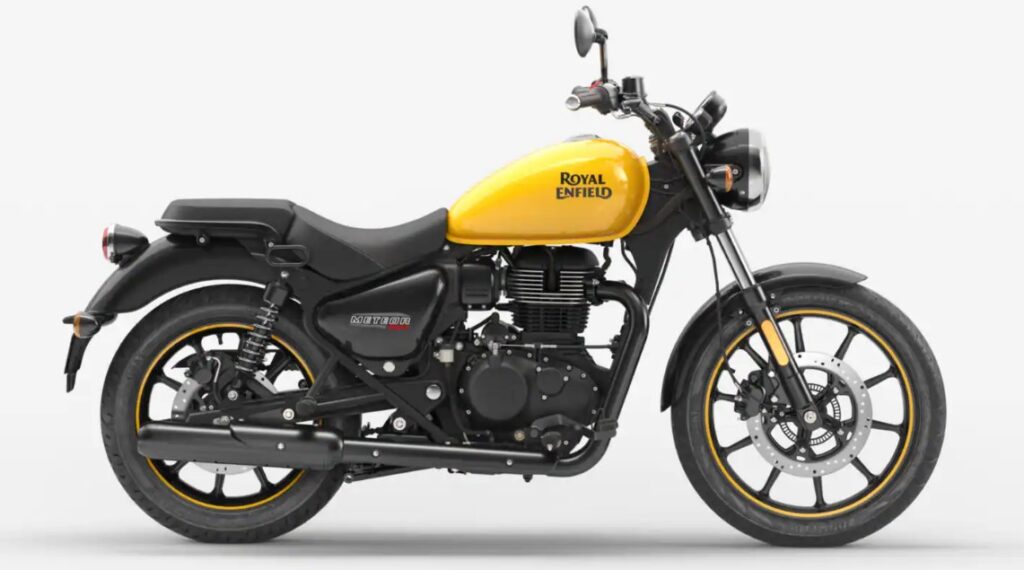 The Royal Enfield Hunter 350 was launched in India in mid-2022 as the newest addition to Royal Enfield’s expanding portfolio, aimed at younger riders and urban enthusiasts looking for a stylish, approachable motorcycle. Positioned below the Classic 350 in the brand’s lineup, the Hunter 350 is designed specifically for city riding with a combination of … Read more
The Royal Enfield Hunter 350 was launched in India in mid-2022 as the newest addition to Royal Enfield’s expanding portfolio, aimed at younger riders and urban enthusiasts looking for a stylish, approachable motorcycle. Positioned below the Classic 350 in the brand’s lineup, the Hunter 350 is designed specifically for city riding with a combination of … Read more - MG Cyberster: A Revolutionary Electric Roadster
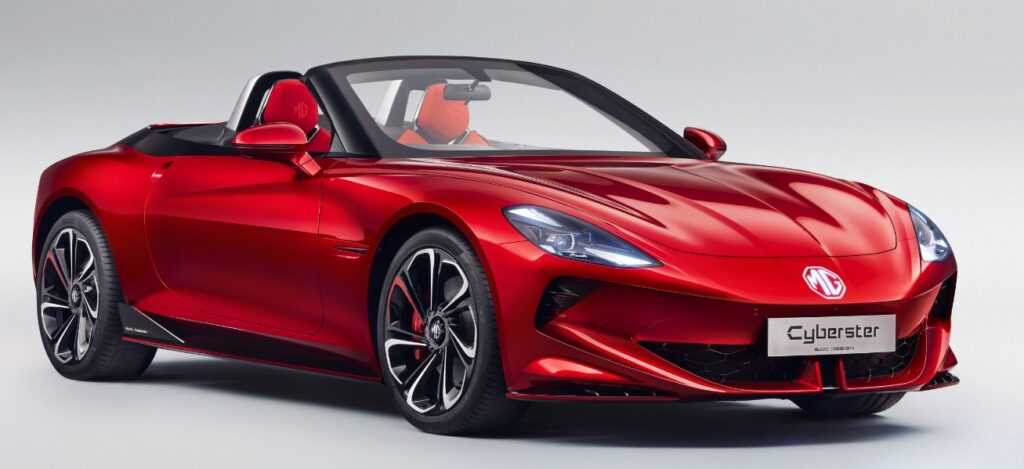 The MG Cyberster is a groundbreaking electric sports car that marks a significant evolution in the automotive world. Combining cutting-edge technology, thrilling performance, and a nod to MG’s rich heritage, the Cyberster is poised to redefine the roadster segment. Below, we delve into every aspect of this remarkable vehicle. MG Cyberster Launch Details The … Read more
The MG Cyberster is a groundbreaking electric sports car that marks a significant evolution in the automotive world. Combining cutting-edge technology, thrilling performance, and a nod to MG’s rich heritage, the Cyberster is poised to redefine the roadster segment. Below, we delve into every aspect of this remarkable vehicle. MG Cyberster Launch Details The … Read more - Xiaomi Mi 15 Ultra: A Flagship Marvel with Cutting-Edge Technology
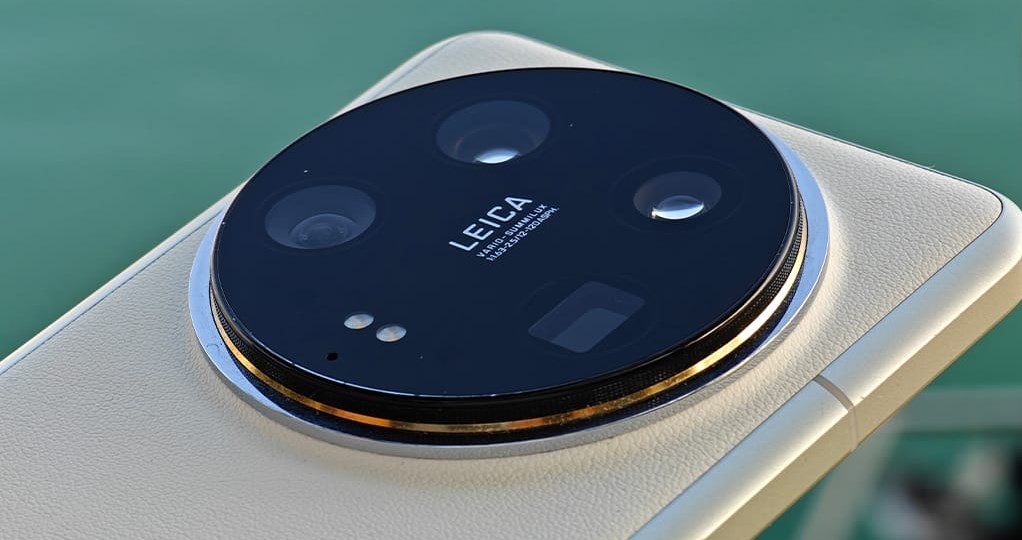 The Xiaomi Mi 15 Ultra is a highly anticipated flagship device from Xiaomi, designed to push the boundaries of smartphone innovation. Although specific launch details for the Mi 15 Ultra are not yet available, it is expected to follow in the footsteps of its predecessors by offering a blend of premium features, advanced technology, and … Read more
The Xiaomi Mi 15 Ultra is a highly anticipated flagship device from Xiaomi, designed to push the boundaries of smartphone innovation. Although specific launch details for the Mi 15 Ultra are not yet available, it is expected to follow in the footsteps of its predecessors by offering a blend of premium features, advanced technology, and … Read more - Electrifying the Future: Unveiling the Skoda Enyaq – A Revolutionary Leap in Sustainable Mobility
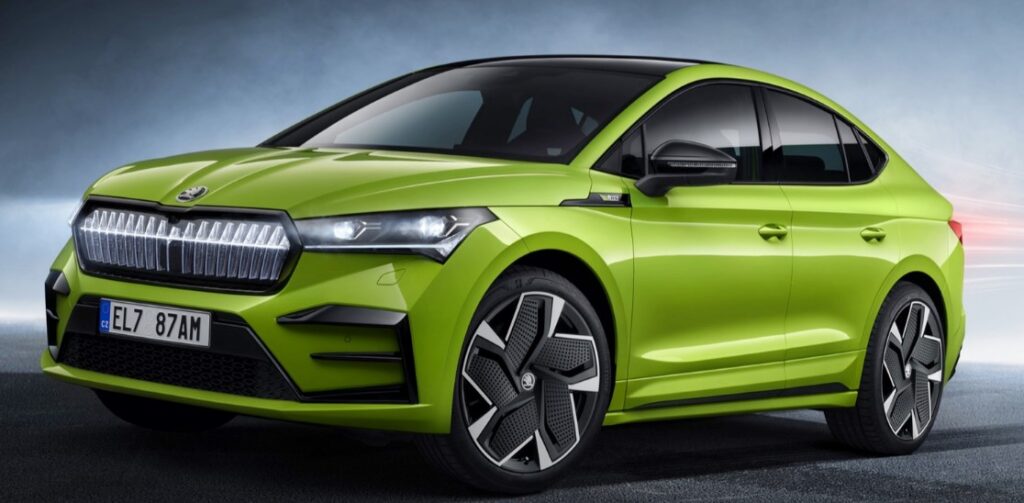 The Skoda Enyaq represents a significant milestone in the Czech automaker’s journey toward electrification. As a versatile electric SUV, it combines cutting-edge technology, a striking design, and practical functionality to cater to the growing demand for sustainable mobility. This article delves into various aspects of the Skoda Enyaq, including its launch details, specifications, design, safety … Read more
The Skoda Enyaq represents a significant milestone in the Czech automaker’s journey toward electrification. As a versatile electric SUV, it combines cutting-edge technology, a striking design, and practical functionality to cater to the growing demand for sustainable mobility. This article delves into various aspects of the Skoda Enyaq, including its launch details, specifications, design, safety … Read more - Realme GT Neo 7 Pro: A Performance Powerhouse with Flagship Features
 The Realme GT Neo 7 Pro is a highly anticipated smartphone from Realme, designed to deliver exceptional performance and premium features at an affordable price. Launched on March 7, 2024, this device is part of Realme’s popular GT series, which has consistently offered high-end specifications without the hefty price tag. With its powerful MediaTek Dimensity … Read more
The Realme GT Neo 7 Pro is a highly anticipated smartphone from Realme, designed to deliver exceptional performance and premium features at an affordable price. Launched on March 7, 2024, this device is part of Realme’s popular GT series, which has consistently offered high-end specifications without the hefty price tag. With its powerful MediaTek Dimensity … Read more
- 2024 KTM 390 Duke: Reigniting the Thrill – A New Era of PerformanceThe KTM 390 Duke has long been a favorite among motorcycle enthusiasts, known for its aggressive styling, spirited performance, and … Read more
- 2025 Honda Civic Sedan Review: Launch Details, Specifications, Safety Features, and PerformanceThe 2025 Honda Civic Sedan is set to make waves in the automotive market with its launch this year. Honda … Read more
- 2025 Kia Carens: A Comprehensive Look at the Updated MPVThe 2025 Kia Carens is set to make a significant impact in the Indian MPV market with its upcoming launch … Read more
- 2025 Mercedes-Benz S-Class: Redefining Luxury and InnovationThe 2025 Mercedes-Benz S-Class continues the legacy of being the pinnacle of luxury sedans. As a flagship model for the … Read more
- 2025 Toyota Fortuner: The Icon Reimagined for a New EraThe 2025 Toyota Fortuner arrives as a bold evolution of one of the world’s most trusted and admired SUVs. Building … Read more
